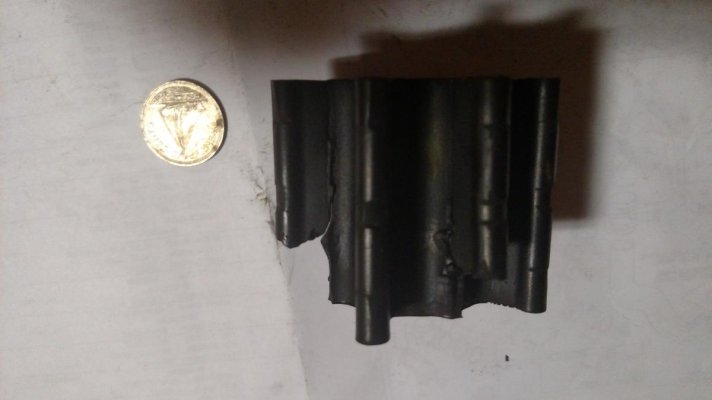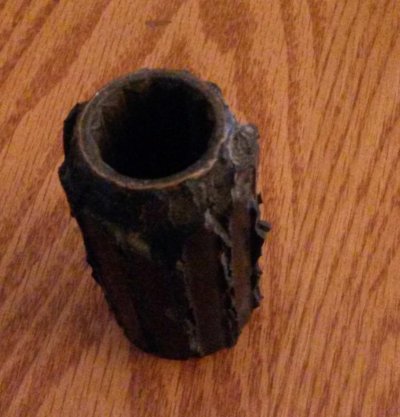Dougcole
Guru
I changed the impellers on my motors today, Yanmar 4LHA-Stp, and one of them was pretty chewed up. It was missing big chunks of three vanes.
I know I need to get those vanes out of the system so I pulled the cover off of the end of the HE closest to the pump, just downstream of where the hose enters the HE. No vanes. I pulled the other end next...no vanes there either. Nothing in the hose between the pump outlet and the HE inlet either.
My heat exchangers have screens on them, with openings a little larger than the diameter of a pencil lead. I don't see any possible way that the broken chunks of impeller could get past them and into the tubes unless they were ground up into tiny pieces, almost a powder.
Any thoughts as to where they could be? Stuck in the pump somewhere maybe?
I know I need to get those vanes out of the system so I pulled the cover off of the end of the HE closest to the pump, just downstream of where the hose enters the HE. No vanes. I pulled the other end next...no vanes there either. Nothing in the hose between the pump outlet and the HE inlet either.
My heat exchangers have screens on them, with openings a little larger than the diameter of a pencil lead. I don't see any possible way that the broken chunks of impeller could get past them and into the tubes unless they were ground up into tiny pieces, almost a powder.
Any thoughts as to where they could be? Stuck in the pump somewhere maybe?





